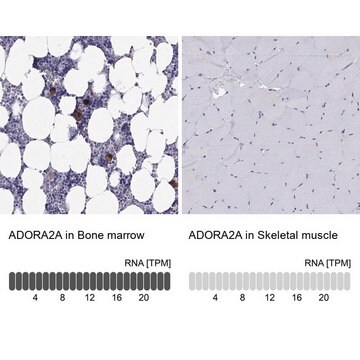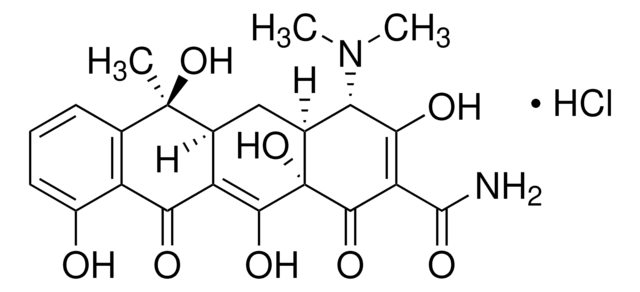MABS1255
Anti-Platelet Factor 4 Antibody, clone 197.2
clone 197.2, from mouse
Synonyme(s) :
Platelet factor 4, C-X-C motif chemokine 4, Iroplact, Oncostatin-A, PF-4
About This Item
Produits recommandés
Source biologique
mouse
Niveau de qualité
Forme d'anticorps
purified immunoglobulin
Type de produit anticorps
primary antibodies
Clone
197.2, monoclonal
Espèces réactives
human
Technique(s)
ELISA: suitable
flow cytometry: suitable
immunocytochemistry: suitable
western blot: suitable
Isotype
IgG1κ
Numéro d'accès NCBI
Numéro d'accès UniProt
Conditions d'expédition
ambient
Modification post-traductionnelle de la cible
unmodified
Informations sur le gène
human ... PF4(5196)
Catégories apparentées
Description générale
Spécificité
Immunogène
Application
ELISA Analysis: A representative lot detected PF4 in the absence of heparin by ELISA. Decreased immunoreactivity of clone 197.2 was seen toward heparin-complexed PF4 (Xiao, Z., et al. (2008). Blood. 112(4):1091-1100).
Function Analysis: A representative lot and PF4, but not clone 197.2 or PF4 alone, activated human neutrophils as indicated by Mac-1 upregulation (Xiao, Z., et al. (2008). Blood. 112(4):1091-1100).
Immunocytochemistry Analysis: A representative lot, preconjugated with Alexa Fluor™ 488, immunolabeled the co-administered PF4 on human neutrophils. CD32a (Fc gamma RIIA) was seen co-localized with the PF4 anti-PF4 immune complexes on the surface of activated neutrophils (Xiao, Z., et al. (2008). Blood. 112(4):1091-1100).
Western Blotting Analysis: A representative lot detected PF4 under both reduced and non-reduced condition by recognizing a linear epitope (Xiao, Z., et al. (2008). Blood. 112(4):1091-1100).
Qualité
Flow Cytometry Analysis: 1 µg of this antibody detected PF4 in one million 4% paraformaldehyde-fixed, 0.2% Triton X-100-permeabilized human platelets.
Description de la cible
Forme physique
Autres remarques
Informations légales
Vous ne trouvez pas le bon produit ?
Essayez notre Outil de sélection de produits.
Code de la classe de stockage
12 - Non Combustible Liquids
Classe de danger pour l'eau (WGK)
WGK 2
Point d'éclair (°F)
Not applicable
Point d'éclair (°C)
Not applicable
Certificats d'analyse (COA)
Recherchez un Certificats d'analyse (COA) en saisissant le numéro de lot du produit. Les numéros de lot figurent sur l'étiquette du produit après les mots "Lot" ou "Batch".
Déjà en possession de ce produit ?
Retrouvez la documentation relative aux produits que vous avez récemment achetés dans la Bibliothèque de documents.
Notre équipe de scientifiques dispose d'une expérience dans tous les secteurs de la recherche, notamment en sciences de la vie, science des matériaux, synthèse chimique, chromatographie, analyse et dans de nombreux autres domaines..
Contacter notre Service technique








